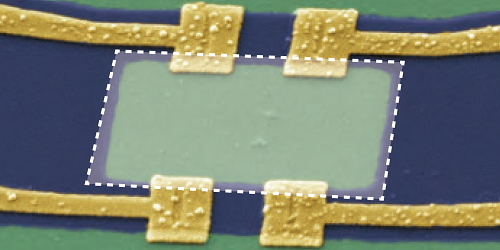Tailored Superconducting Circuit for Quantum Technologies
Many quantum technologies rely on devices known as Josephson junctions, which allow an electric current to flow without resistance across a barrier separating two superconductors. The magnitude and direction of that current depend on the phase difference between the superconductors’ wave functions. Now Saulius Vaitiekėnas at the University of Copenhagen, Denmark, and his colleagues have demonstrated a way to tailor this current–phase relation [1]. Such tunability could allow scientists to develop new types of signal amplifiers, quantum simulators, and superconducting quantum bits.
Over the past decade, efforts to control the current–phase relation of Josephson junctions have focused on two main methods. The first, which involves combining multiple junctions containing insulating barriers, is resilient against device-to-device variations but lacks in situ tunability. The second, which uses individual junctions containing conducting barriers, offers in situ tunability but suffers from irreproducibility. The approach developed by Vaitiekėnas and his colleagues combines the advantages of those two methods.
The team constructed a superconducting circuit that consists of four Josephson junctions, with semiconducting barriers, embedded in a rectangular loop. This circuit acts as a single Josephson junction whose current–phase relation refers to the superconducting current flowing through the loop and the phase difference between the superconductors on the opposite sides of the loop. By altering voltages applied to the four junctions and the magnetic flux passing through the circuit, the researchers found that they could control the system’s current–phase relation. In particular, they showed that the circuit could function as a novel building block for protected quantum bits or as a diode for superconducting currents. Beyond its technological applications, the circuit could provide valuable insights into how symmetries are broken in exotic materials, the researchers say.
–Ryan Wilkinson
Ryan Wilkinson is a Corresponding Editor for Physics Magazine based in Durham, UK.
References
- L. Banszerus et al., “Hybrid Josephson rhombus: A superconducting element with tailored current-phase relation,” Phys. Rev. X 15, 011021 (2025).




